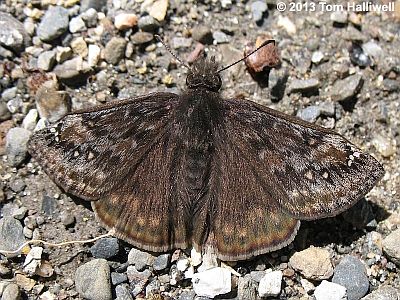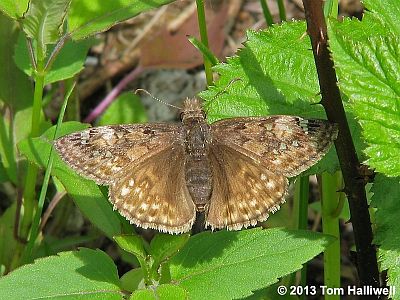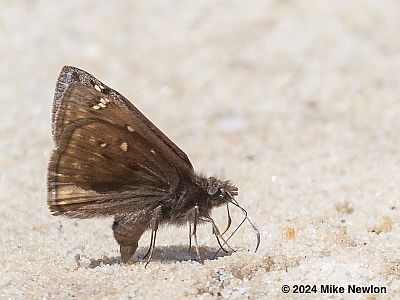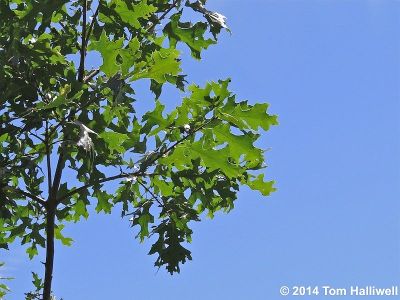New Jersey Butterfly Club
A chapter of the North American Butterfly Association (NABA)
Juvenal's Duskywing
Erynnis juvenalis
Identification: Very small—1.4". Above: FW mottled dark brown with variable hairlike white overscaling particularly in the male. Several conspicuous glassy spots in FW, including a wrist "bracelet," and 2 additional spots aligned with it, and a small, white, cell-end spot. HW dark brown with inconspicuous paler, submarginal spots. Female has better-defined patterns on both wings, and more-prominent FW spots. Below: FW and HW in both sexes dark brown, with a few glassy marks usually visible in FW and 2 pale spots along leading edge of HW. (However, like all duskywings, Juvenal's is most often seen spread-winged, so these spots may be difficult to see.) Other: Palps ("face") usually dusky; usually lacks white ring around eye. Similar species: Horace’s Duskywing is virtually identical above except that Horace's female is even more highly patterned than Juvenal's and has larger glassy spots in FW. Also, Horace’s male lacks hairlike white overscaling seen in Juvenal’s male. Below, Horace's lacks the 2 pale spots along leading edge of HW. Horace's also has a whitish "face" and a white ring over the eye. Wild Indigo Duskywing is slightly smaller, blacker above (especially the male), with smaller glassy spots in FW, and lacks cell-end spot above and pale spots along leading edge of HW below.
NJ Status and Distribution: Resident. Common and widespread throughout.
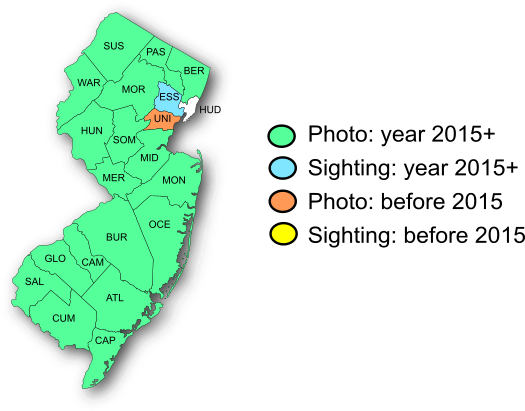
Habitat: Dry fields near woods with oaks, and openings and trails within oak woodlands. Occasionally visits gardens, especially those near oak woodlands.
Flight Period: One brood from mid-April to late June. Extreme dates: North Jersey 4/6—7/12; South Jersey 3/19—6/29.
Caterpillar Food Plants: Oaks (Quercus), especially young trees with tender leaves.
Overwintering Stage: Caterpillar.
Good Locations: Peaslee WMA, Belleplain SF, Woodbine RR/Bike path, Greenwood Forest WMA, and just about any field or woodland opening near oaks.
Comments: This is the default large duskywing seen flying along woodland trails in spring, where on warm, sunny days in May dozens of males can sometimes be seen. Males often perch on the tops of low, dead stalks of vegetation and—after flying out to inspect all manner of passing objects— repeatedly return to the same perch. So, if you are trying to photograph one and it takes flight, be patient as it is likely to give you many more chances.
Duskywings are also often seen on bare soil and animal scats where they use their proboscis to ingest moisture and minerals. So be careful when you get down on your hands and knees to photograph these butterflies!
